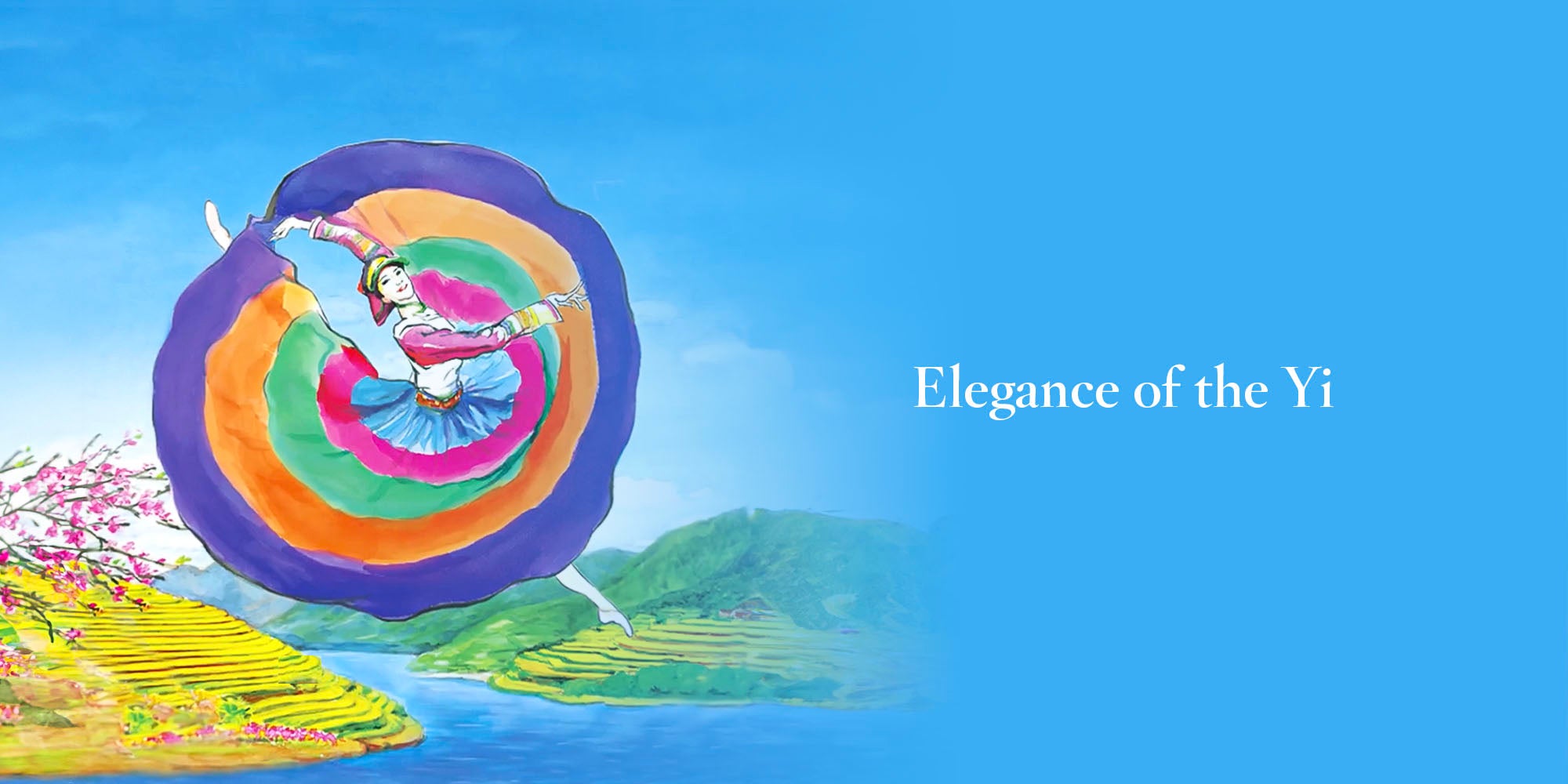
Yi Ethnic Clothing and Culture
Michelle Guo, Contributing Editor
At the break of dawn, with birds singing joyfully, amidst the wisps of mist and the backdrop of distant mountains, a group of beautiful Yi girls dance freely among the clear waters and yellow flowers of an Yi village in the Liang Mountains. When the girls spread out their wide, colorful skirts, they resemble butterflies fluttering their vibrant wings. Spinning, they become blooming flowers.
Anyone who has seen the mesmerizing dance of Yi women will be deeply impressed by their bright, ethnically distinctive clothing, especially their stunning pleated skirts. The latest "Yi Rhythms" jewelry series from Shen Yun Collections is inspired by the dynamic curves of these pleated skirts in motion. Now, let’s delve into the culture and clothing of the Yi people!
The Yi people are an ancient ethnic group with a long history, numbering about nine million, making them China's seventh-largest ethnic minority. The Yi primarily inhabit the southwestern Chinese provinces of Yunnan, Sichuan, and Guizhou, and nearby areas. Many live in remote mountains, relatively isolated from the outside world, which has allowed them to preserve their traditional culture largely intact, from customs and language to clothing.
The ancient culture of the Yi is deeply marked by "divine transmission," with a history and wisdom that are awe-inspiring. For example, the ancient Yi epic "Le O Te Yi" mentions that humanity's ancestors came from the heavens and endured hardships on earth for the sake of their heavenly homeland. The epic describes the Earth as a realm of "seven lands and five waters," referring to the seven continents and five oceans, indicating that the Yi people understood the Earth's layout thousands of years ago. The Yi's ancient text "Wu Shi Ji Lue" records the creation of the universe from chaos to the emergence of clear and murky energies, and then the formation of two elemental substances called "Ai Pu," representing the Heavenly Father and Earth Mother, sun and moon, yang and yin, which gave birth to all things. These elements are symbolized by two intertwined black and white worms, remarkably similar to the familiar Taiji (yin-yang) symbol. The Yi's ancient book "Na Shi" records and illustrates the orbits of the nine planets. Other Yi historical texts document phenomena and histories considered myths by modern people, such as the River Map, Luo Book, different types of ancient humans, and the Great Flood.
This memory from the dawn of creation has been passed down through historical texts, stories, songs, and art, and Yi clothing is also a carrier of this ancient culture. The Yi have many subgroups, widely distributed, with significant variations in clothing across regions, amounting to nearly a hundred different styles, each with its unique characteristics. Thus, Yi clothing is rich and diverse, forming a rather complex system.
Yi women typically wear a right-lapel upper garment with embroidered edges or floral patterns, paired with wide pleated skirts or trousers adorned with broad floral borders, and headscarves. Young Yi women prefer bright, contrasting colors such as red, white, blue, yellow, and pink for their embroidered edges, skirts, and headscarves. Middle-aged women tend to wear more dignified colors like sky blue, green, purple, cyan, and white, while elderly women mainly wear shades of blue, black, and dark green.
Embroidery is a significant component of Yi clothing. Almost all Yi women are skilled in embroidery, and their garments are adorned with various embroidered patterns from head to toe, with intricate designs and exquisite craftsmanship. Traditional patterns include dragons, phoenixes, symbols of longevity, various flowers, birds, animals, and Buddhist swastikas and Daoist bagua diagrams. Due to the intricate craftsmanship, a set of Yi women's clothing can take one to two years to complete. Yi embroidery is also highly valued as an art form and is quite popular and costly in modern times.
The previously mentioned pleated skirt is arguably the most striking feature of Yi clothing. Pleated skirts are typically made from three or more contrastingly colored panels, with the top as the waistband, the middle forming a tube, and the bottom as the wide skirt hem. Each layer has pleats, with the bottom being the widest and most pleated, creating a flowing grace when walking and a blooming flower effect when dancing.
The bright colors, exquisite embroidery, and traditional styles of Yi clothing perfectly embody the wisdom, simplicity, enthusiasm, kindness, and careful preservation of traditional culture and beliefs of this ancient ethnic group. In our modern, materialistic, and Westernized era, the Yi people, their dance, and their clothing open a window in time, allowing us to glimpse the beautiful realm of harmony between humans and the divine.

























